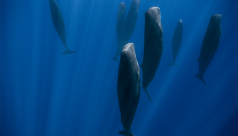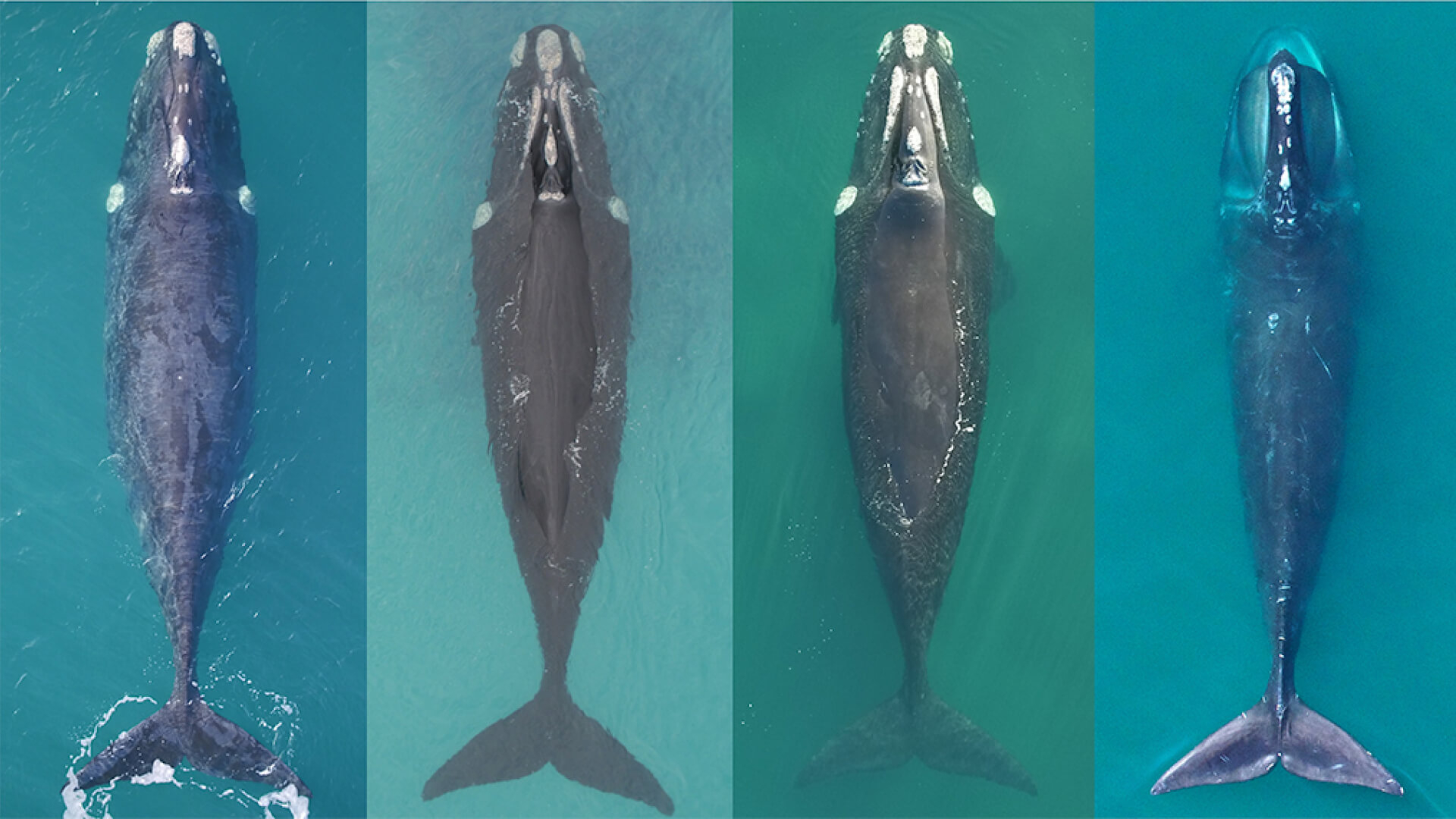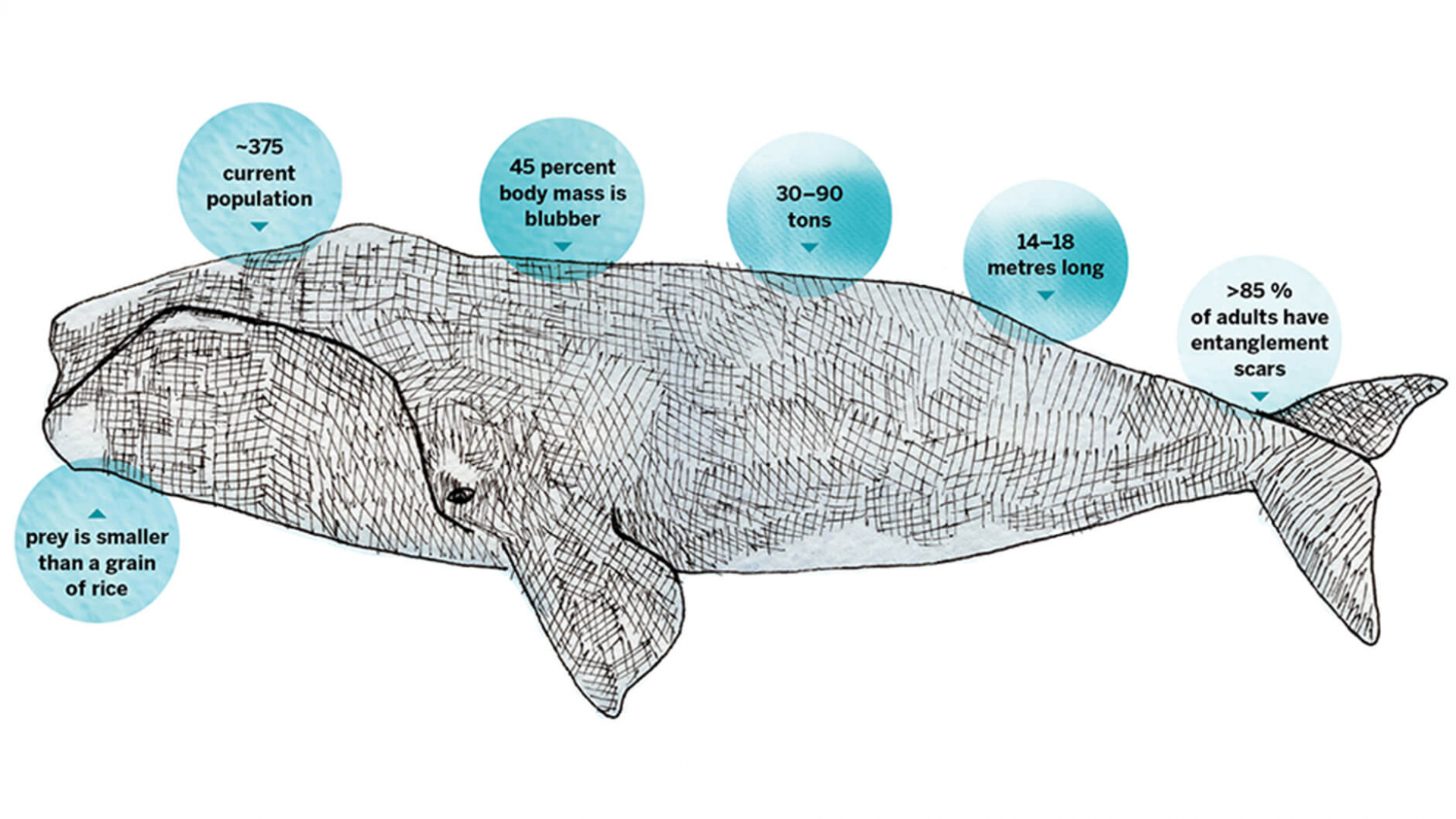Named literally as the “right” type of whale to hunt, the critically endangered North Atlantic right whale is at risk of extinction
North Atlantic right whales are large baleen whales, measuring 14 to 18 metres in length and weighing 30 to 70 metric tons or more. Being large, slow swimmers who could be pursued by small boats, these animals were identified as the “right” kind for hunting by early Western whalers who found them to be the most profitable whales for commercial whaling. North Atlantic right whales are robust and have large fat reserves, with blubber composing up to 45 percent of their body mass, which meant they would float when killed, making it easier for hunters to haul them back to shore.
Despite the large size of right whales, most of their prey is smaller than a grain of rice. They feed mainly on copepods but also krill larvae. The miniscule copepods eaten are almost entirely one species, Calanus finmarchicus. As you can imagine, the amount and concentration of tiny prey required to sustain such massive bodies is immense. When optimally nourished, females can give birth once every three years after reaching sexual maturity, but when females are in poorer condition, the number of births and overall reproductive success decline.
The challenges right whales face today began with their exploitation around 900 CE by Basque whalers. Several centuries of over-hunting resulted in the collapse of North Atlantic right whale populations in the eastern Atlantic. The hunt then shifted to the western side of the Atlantic, where so many whales were taken during the course of a few decades that the population there was hugely reduced by the middle of the 18th century.
Nearly 100,000 right whales of the species are estimated to have been caught worldwide before a moratorium on hunting them was declared in the 1930s by the first International Convention for the Regulation of Whaling (a precursor to the International Whaling Commission) to prevent their extinction. Prior to whaling, estimates suggest that North Atlantic right whales numbered between 9,000 and 21,000. Today, there are less than 375, and fewer than 100 are breeding females (estimates now may be as low as 75). The moratorium allowed all populations to recover. The North Pacific and southern right whale populations have been increasing by as much as five to seven percent annually. The North Atlantic population’s recovery has been slower and currently is decreasing.
Even though hunting North Atlantic right whales is illegal, human activities still present the greatest threat to this species. Dangers include being struck by ships and getting entangled in fishing gear. This situation is made worse by the fact that the whales’ habitat and migration routes cross major shipping lanes and are close to major ports along the Atlantic seaboard.
In spite of these threats, the population of North Atlantic right whales had increased during the latter half of the 20th century. However, between 2010 and 2015, the population began to decline at a rate of one percent per year. The decline was even more dramatic for females, whose numbers dropped by seven percent during that time. The plight of the North Atlantic right whale attracted national attention in 2017 when 17 whales died in a single season due to vessel strikes and entanglement.
A significant problem compounding decline is that the whales are getting thin. Researchers recently compared body conditions among the world’s three right whale species, and their findings indicate that the North Atlantic species shows evidence of less body fat and poorer body condition.
This is likely linked to the chronic effects of entanglements, which can cause injury (85 percent of adults manifest entanglement scars) and increase the metabolic cost of swimming and feeding by weighing whales down. These additional challenges can lead to lower rates of calf survival and reduced overall reproductive success.
Efforts are being made by both Canadian and American governments to reduce the loss of these whales by limiting ship speeds and restricting fishery activities in certain regions when the whales are present. Efforts to conserve and rebuild the population of North Atlantic right whales are supported by researchers who monitor these whales and volunteers who dedicate their time and resources to help free entangled whales, often at great personal risk.
The future of the North Atlantic right whale is far from clear, but what is clear is the direct link between their survival and the actions we choose to take.
Explore More

Opens Summer 2021
Garfield Weston Exhibition Hall, Level B2
Supporting Sponsor: Newfoundland and Labrador Tourism
Lead Exhibition Patron: Nita and Don Reed & Family


